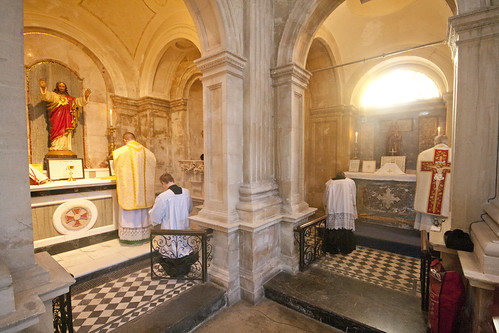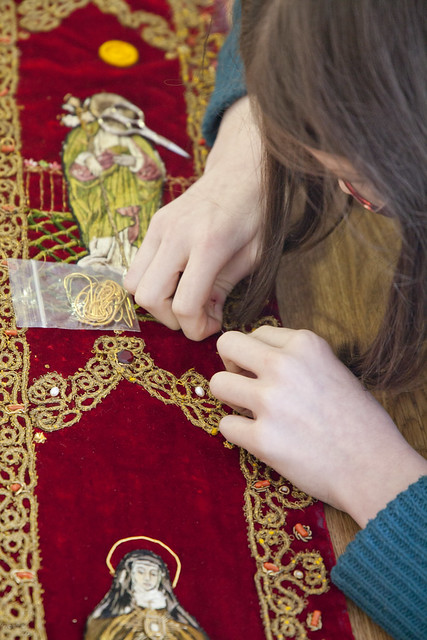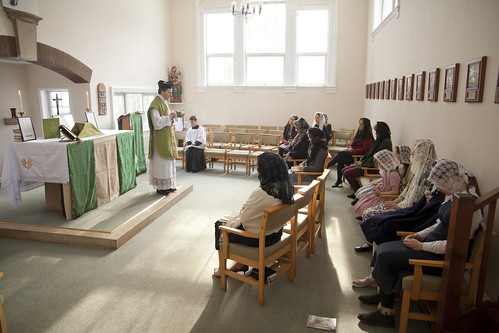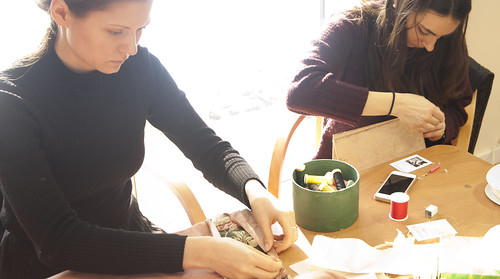Chairman's Blog
Voice of the Family Conference in Cardiff in September
This conference is open to all who are concerned with safeguarding the deposit of our faith in our families and in society. Apart from discussing the particular threats to the family and ways to counter these threats, it will be an opportunity to meet fellow Catholics and to forge a fellowship that will strengthen us as individuals and families at this turbulent time.
Fr Linus Clovis, Family Life International, New Zealand
Prof. Roberto de Mattei, Lepanto Foundation, Italy
Maria Madise, Voice of the Family, UK
John Smeaton, Society for the Protection of Unborn Children, UK
John-Henry Westen, LifeSiteNews, Canada
- Friday: registration will be open from 3pm; Holy Mass, followed by a talk and social time;
- Saturday: Holy Mass, talks and opportunities for Adoration and Confession;
- Sunday: Solemn High Mass in honour of the Nativity of Our Lady, followed by brunch.
For further information, please contact: enquiry@
Proposed Regina Caeli Academy in Bedford: Open Day
I'm happy to pass on the news of this event to anyone who might be interested. You can sign up at their Eventbrite page.
What are Side-Chapels for?
 |
| Our Lady of Sorrows, appearing to gesticulate in horror at the sculpture deposited in her chapel. |
The famous Jesuit Church, the Immaculate Conception, Farm Street, in London, is richly decorated, and boasts many exquisite side-chapels. One can imagine Lady Julia Flyte popping in to one of them to pray before her chat with her Jesuit spiritual director in Brideshead Revisited, as many Catholics must have done over the Church’s 150 years of use. In one of these, dedicated to Our Lady of Sorrows, I found, on a recent visit, a life-size park bench rendered in bronze, and on it, an equally brazen blanket covering a sleeping figure. This “Homeless Jesus” sculpture, of which there are copies in cities around the world, has found its way there because Westminster Council refused permission for it to be installed near London’s Houses of Parliament.
Server Training: this Saturday in London
 A reminder that there will be a training day for servers at St Mary Moorfields in London this Saturday, 16th, with enrollments into our Servers' sodality, the Society of St Tarcisius.
A reminder that there will be a training day for servers at St Mary Moorfields in London this Saturday, 16th, with enrollments into our Servers' sodality, the Society of St Tarcisius.
The day starts at 10:30am and should conclude by 4:30pm. All the details are here, including about the next two training days later in the spring: 9th March and 11th May.
The church is here.
Email tarcisius@lms.org.uk if you want to attend.
I'm delighted to say that the medals we commissioned for the Society of St Tarcisius have arrived, which makes enrollments possible. And they look great. We will be using different coloured cords to indicate ranks in the Society.
Naturally we had in mind the precedent set by the venerable Confraternity of St Stephen with their distinctive servers' medal: although ours is quite different in design, it is a comparable size.
 I was shocked to discover, recently, examples of the Confraternity medal made of plastic in a local sacristy. Is this a new thing? The example I have (left behind at last year's Summer School and not reclaimed), is at least made of metal.
I was shocked to discover, recently, examples of the Confraternity medal made of plastic in a local sacristy. Is this a new thing? The example I have (left behind at last year's Summer School and not reclaimed), is at least made of metal.
In any case, the Society of St Tarcisius, while inspired by the original ideals of the Confraternity, is exclusively committed to the Traditional Latin Mass, and the service of the Altar by boys and men. On Saturday, and at future training events, a priest (in this case Fr Gabriel Diaz) will bless medals and officiate at the service of enrollment.
Sinners in the Queue for Communion
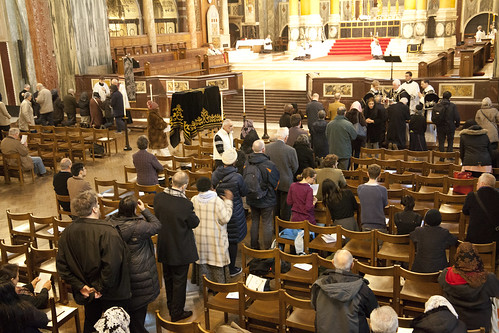 |
| Queuing for Holy Communion in Westminster Cathedral at the LMS Annual Requiem |
A lot of the acrimonious debate about Amoris Laetitia boils down to the question of Catholics in a state of grave sin wishing to receive Holy Communion. Such difficulties are not new to the Church, which has long included unjust rulers, men who have mistresses, people enjoying the fruits of crime, and such like. Indeed, in one respect the situation was more difficult in past centuries, because more people voluntarily excluded themselves from receiving, to such an extent that in the High Middle Ages most lay Catholics only received Communion once a year, on Easter Sunday.
Bad photographs showcased by the Catholic Herald
Another week, another rather second-rate photograph given the full-page treatment in the Catholic Herald. This time, as well as the poor lighting, the camera appears to have been focused on the altar (hardly visible in the gloom), whereas the brightly-lit reredos some distance behind it is out of focus.
I'm sure a common response to my curmudgeonly comments will be that I should be more charitable to what is, presumably, an amateur photographer sending in a snap to the Catholic Herald for which he will not even be paid. This response, however, is part of the cult of mediocrity which has done huge damage to the Church, and should be ruthlessly uprooted wherever it is found.
Naturally, small, charitable Catholic associations and impoverished parishes struggle to produce professional-looking publicity, or music; they struggle with the legal obligations imposed by data-processing, safeguarding, and employment law; they can't always answer the phone or process requests for documents as quickly as one would wish. The Latin Mass Society is in the same category. But let us not embrace a culture of incompetence, half-hardheartedness, and kindergarten artistic standards as if it were a good thing in itself. Let us at least continue the struggle against the difficulties inevitable to under-resourced organisations.
And when there is a supposedly professional, commercial institution in our midst, like the shiny new magazine-format Catholic Herald, let us hold it to decent standards. Enough of this rubbish.
As I wrote on this blog some years ago:
I think most people can tell when a parish fails to rise to great heights of artistry through sheer lack of resources. The state of the building and nature of the parishioners will tell you enough. Such a situation, where poverty is matched with zeal, has made many Catholic artists want to contribute to community life at their own cost, as an act of charity. When artistic mediocrity is matched with pile carpets, expensive sound-systems and a well-heeled congregation, then you know that it is ideological.
Here is the letter which the Catholic Herald declined to publish. In trying to be charitable, I cast the blame on the lighting in this particular case, but the fact is they should never have published the photograph I refer to.
Is repentance possible?
Support the Latin Mass Society
Guild of St Clare Sewing Retreat, Spring 2019: photos and report
Cross-posted from the Guild of St Clare blog.
This year's spring Guild of St Clare Sewing Retreat, like last year's, took place in the snow: last time it was the 'Beast from the East' in early March. By now we knew the route up Boars Hill which doesn't turn into a toboggan run for cars, so the disruption was manageable. I had even bought the car some 'snow socks' and other widgets for bad weather, which came in handy.
The last day of the Retreat, Sunday, also happened to be St Blaise's feastday, and we had the Blessing of Throats.
Lots of sewing was done, and various large projects for the Latin Mass Society and others were brought closer to completion. The Retreat was sold out--numbers are limited--and much edified by Fr Edward van den Burgh's spiritual conferences, Masses, and other devotions, and also by his joining in the sewing himself! He went home with advice on the repairs of one liturgical item he had brought with him and completed repairs on others.
Support the Latin Mass Society
Children at Mass: against Fr Michael White
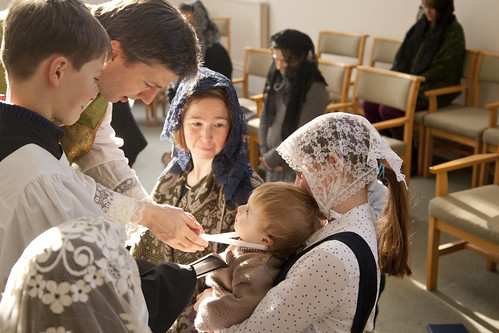 |
| An infant receiving the Blessing of Throats on the Feast of St Blase, during the Guild of St Clare Sewing Retreat, at Boars Hill, Oxford. |
I've written a fair amount on this topic on this blog; here is a piece I've done for LifeSiteNews.
It begins:
Blow the trumpet in Sion, sanctify a fast, call a solemn assembly. Gather together the people, sanctify the church, assemble the ancients, gather together the little ones, and them that suck at the breasts: let the bridegroom go forth from his bed, and the bride out of her bridal chamber.
And the people being all assembled together, both men and women, children and strangers, that are within thy gates.
Support the Latin Mass Society
Dialogos Institute colloquium 2019: Integralism
14TH - 15TH JUNE 2019, NURSIA, ITALY
The Second Vatican Council spoke of the “traditional Catholic doctrine on the moral duty of men and societies toward the true religion and toward the one Church of Christ”. Over the course of the last seventeen hundred years this his duty has been realised in many different ways. In recent years the concept of Integralism has inspired renewed interest and controversy. This summer eight scholars from around the world will gather in Norcia to consider the vision and the reality of a broad cross section of integrally Christian societies.
SPEAKERS include Prof Tom Pink, Fr Thomas Crean, Dr Alan Fimister and Fr Edmund Waldstein.


